Dedicated to the memory of Thomas B. Gay, educator, painter, poet, friend.
(read more about Thomas B. Gay)
Each spring we use this reading loop to bring to your attention writers and artists whose work you may be encountering for the first time.
In this issue, Blackbird’s last in this format, we have chosen to recognize the former and current graduate student editors, poets all, whose intelligence and service enabled us to survive (and even thrive) through the pandemic and its aftermath. We owe each of them our profound gratitude as we recognize their critical communal and individual roles in the collaboration that has created each issue of our journal.
They are also writers to watch, and we expect that you will be glad to discover them now—and to hear of them again later in their careers, as you no doubt will.
| Colin Bailes | ||
| Colin Bailes’s poetry reflects on the precarity of life, the pressures of growth, and the insurmountable passing of time. In “Between the Fields of Then and Now,” the speaker finds themselves stumbling “again” into the present, “surprised . . . as if I never expected to come this far,” and in “Nostos,” lemon trees, swifts, and crepe myrtles become manifestations of tentative movement and change. Elements of the natural world are made into illustrations of the speaker’s inner turmoil, yet Bailes tenderly pursues the “trail the light leaves when it exits a room.” | 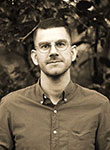 |
|
| Hayley Graffunder | ||
| In her poems, Hayley Graffunder reflects on the vividness of memory, childhood, and loss. There is a hollow sharpness embedded in the turmoils of youth, its personal relationships and self-identity. In “Relic,” the speaker seems stuck in one of these moments and writes, “the way I will never be anything but ten.” The ending image also reflects this stagnancy: “Always the dark, always my brother driving away.” “Like Riding a Bike” also seeks to isolate a memory riddled with how loss haunts us: “so we just kept / peddling until / we thought to look / back at what we lost.” |
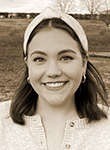 |
|
| Danielle Kotrla | ||
| Danielle Kotrla’s poems capture the determination of a speaker to remember tenderness in the face of loss and the passage of time. The central figure of a beloved dog allows for ruminations on memory and the inevitablity of change (for Kotrla, the “untamed”). She writes in “Bluebonnets,” “I learned / losing sight of him meant that the field was thriving” and in “Azimuth,” “I buried / that moment, still tender, in the spined / ridges of the valley.” Her poems confront the experience of remembrance and the desire to hold it close, to allow it to feel “cluttered / and overrun.” | 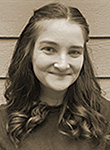 |
|
| Rebecca Poynor | ||
| Set in the Deep South, Rebecca Poynor’s poems illustrate the intersection of childhood memory and the rich, sometimes violent, presence of the natural world. In “Poem with Mississippi Honeybees,” inside and outside exist together: bees live in walls. In “Windowless Place,” a mother’s calls “are eaten / by the air” as the speaker and her brother watch a storm. The natural looms in “supersaturated air” and the honeybees’ “pulsing hum.” The volatility of the outside world offers a sense of wonder and company just as it emphasizes the smallness and uncertainty of existence. | 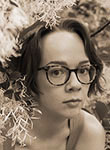 |
|
| Waverley Vesely | ||
| Waverley Vesely’s poems “Small Songs of the Body” and “Portrait of Madame X” reflect on the complexities between visibility, body, and identity. On Sargent’s process of painting Portrait of Madame X, Vesely writes, “He tried to sketch / a way into beauty & realized the body cannot / remain still.” Of Rauschenberg’s 1959, they write, “Not a single camera can represent me, can see me.” The body moves outside a vessel for visibility and into something intangible. Water, mirrors, light, and color emphasize the precarity of visual interpretation, of taking anyone at face value. | 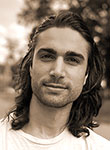 |
|
| Caitlin Wilson | ||
| “Consider my days in terms,” Wilson writes in her poem “Morphology,” a meditation on time, possibility, and change. “Friction devises this hollow form,” she writes, the garden solidifying into certainty: a “garden of stone” and “dimension.” Her poem “The Offices of Grief” also considers this prolonged sense of liminality: “The phone is ringing and has been since the start,” “No ghosts are invited / here,” and “Distant rapids churn and froth / like baby’s breath.” Her poems lie between change or movement; they linger in the looming hallways of overthought. | 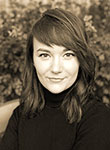 |
|
| Brandon Young | ||
| Set in the steel-milled and “stove-dome furnaces” of Indiana and Michigan, Brandon Young’s poems offer new illustrations of the American Midwest. In “Palmetto Train,” he writes, “I wish to deal with such enormity / in the details.” And indeed, Young’s poems emphasize visibility and remembrance, a desire to shed light on these cities and their people through a zoomed-in lens. In “Wreck Name: Unknown No. 3” he writes, “To forget a name. / To go undiscovered so long . . . ” but follows it up at the end with “It had a name. / Say city say bridge say builder.” | 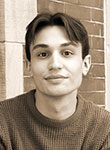 |
Introductions texts appear in different sections of Blackbird but are organized in this alternative menu, a featured reading loop allowing easy navigation of related material.
A link to this “Introductions Reading Loop” menu appears at the bottom of every Introductions-related
page. You may also return to this menu at any time by visiting Features.